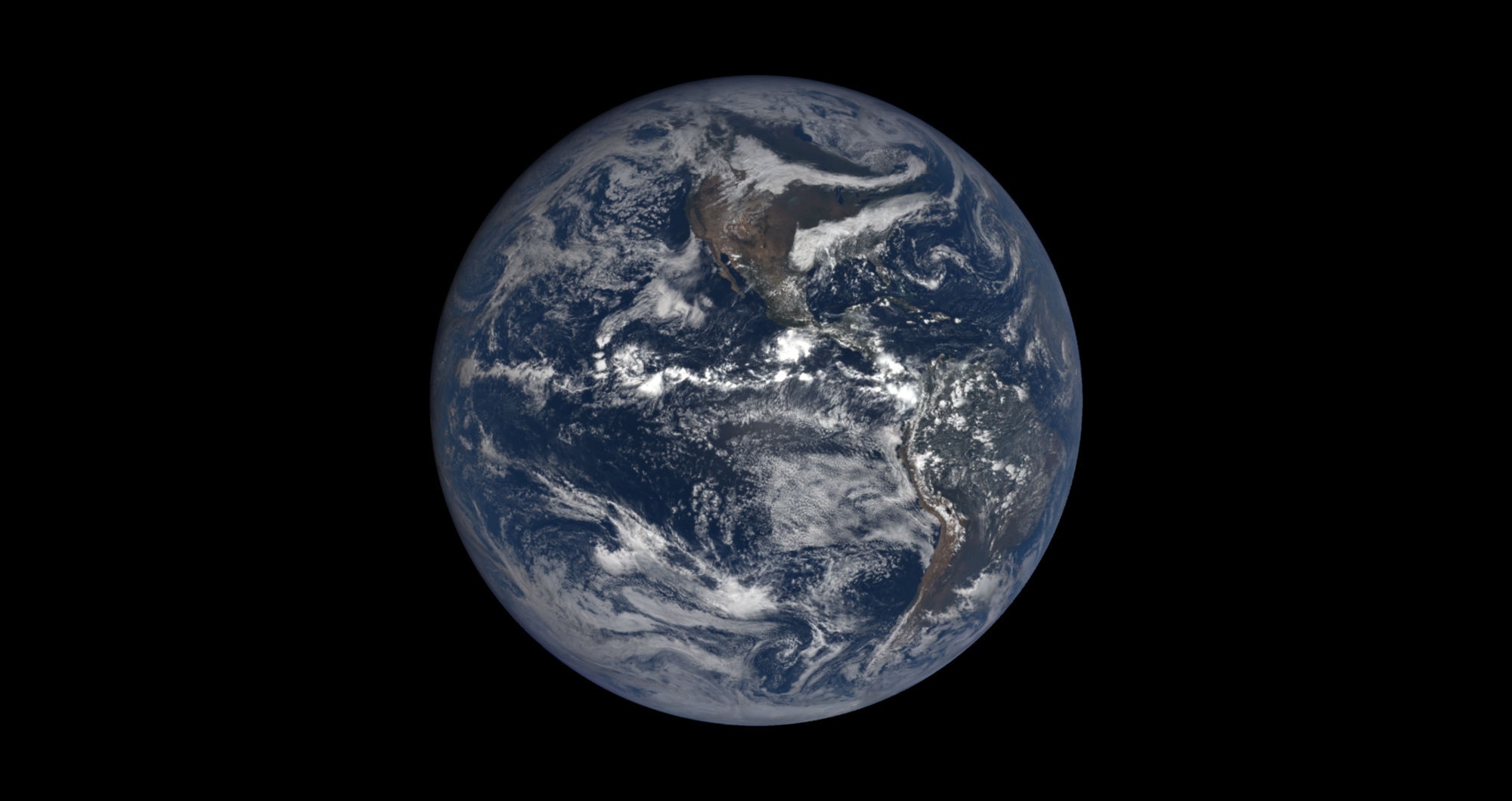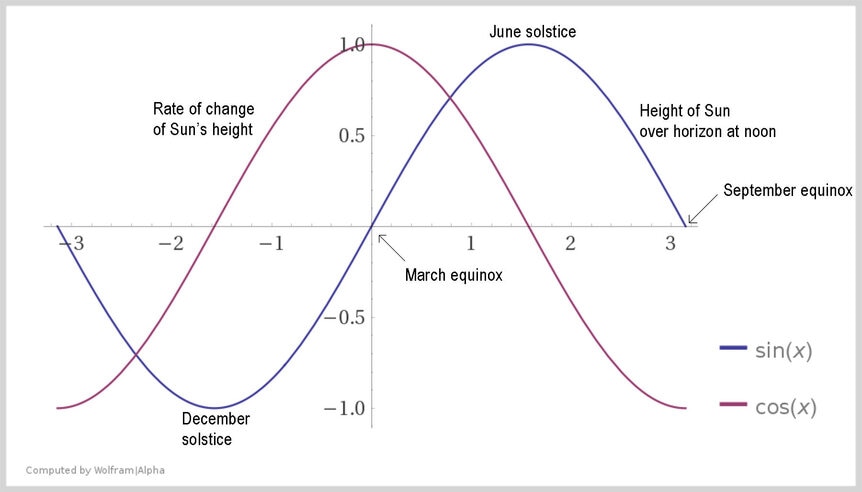Create a free profile to get unlimited access to exclusive videos, sweepstakes, and more!
Happy September equinox! So what exactly does that mean, anyway?

This morning, at 07:50 UTC (03:50 Eastern US time), the center of the Sun crossed the celestial equator in the sky, marking the exact moment of the September equinox*.
This means several things. On this date, the Sun rises due east and sets due west. Some people like to think it's the start of the fall season (spring in the south), though I disagree. It's also commonly thought to be the day when we get 12 hours of day and 12 hours of night, but that turns out not to be the case due to some technical details.
One aspect of it that most people don't talk about much — but which ironically actually has an impact on your daily life — is that at this time, the length of daytime is changing the fastest (from here on out, for simplicity, I’ll just call this "day" as in "day and night"). You know that in summer the days are long, and in winter that's reversed. That means the length of the day changes, but the amount it changes every day isn't constant.
The longest day is on the June solstice (though, weirdly, that's not the date of the earliest sunrise and latest sunset due to Earth's orbit being an ellipse and its axis being tilted). On the next calendar day the length of daylight is slightly less, and even less the next day, and so on until the December solstice, when the Sun is up for the shortest length of time all year. Then that trend reverses.
But if you measure how long each day is (that is, how long the Sun is up), that number changes very little at the solstices, but it changes very rapidly at the equinoctes!
An example should help. I looked up the time of sunset for Boulder, CO (using the SkySafari app) for the week centered on today's equinox (the time of sunset changes with latitude and longitude, and I live near Boulder, so there you go). Here they are:
Fri Sep 20 19:01:09
Sat Sep 21 18:59:29
Sun Sep 22 18:57:49
Mon Sep 23 18:56:09
Tue Sep 24 18:54:30
As you can see, the Sun is setting earlier every day; that's been true since June. But note how much earlier it sets: by about 1m 40s every day.
Now let's look at the times of sunset around the December solstice coming up on December 22:
Fri Dec 20 16:37:14
Sat Dec 21 16:37:42
Sun Dec 22 16:38:13
Mon Dec 23 16:38:46
Tue Dec 24 16:39:20
The Sun sets a little later every day, but look how slowly it changes, only by about 30 seconds every day. That’s much less than it's changing right now, in September.
See? The length of daylight is changing fastest at the equinox, and slowest at the solstice.
All of this is analogous to how high the Sun is off the horizon at noon, too. In the winter the Sun is low in the sky at noon, and in the summer it's much higher. The amount it changes every day is fastest at the equinoctes, and slowest at the solstices! You can check this for yourself: Go to the timeanddate.com site and enter your location. Again, I use Boulder. Then go to September of this year — here's the page for Boulder. The last column is the time for solar noon, when the Sun is highest in the sky. The number in parentheses after it is the height of the Sun off the horizon in degrees (so today on the September equinox for me it’s 49.8°). That number changes by very roughly 0.3–0.4° per day. But if I look at December around the solstice it barely changes at all!
So the question is, why is this happening this way? It's because the Earth is tilted: The axis of its rotation is tipped by 23.5° from being vertical relative to the plane of Earth's orbit. You've seen this a zillion times; globes have the Earth titled this way, for example. As the Earth orbits the Sun the axis stays fixed in space, with the North Pole pointing very close in the sky to the star Polaris. The June solstice is when the North Pole is tipped toward the Sun, and the December solstice is when it's tipped away. The equinoctes are when the axis is pointed 90° away from the Sun (which, maddeningly, is not halfway in time between the solstices, because the Earth's orbit is an ellipse and it moves at different speeds around the Sun at different times of the year).
I know, the geometry can be confusing. But the upshot of all this is that when the Earth's northern axis is tipped toward the Sun, the Sun gets higher in the sky at noon. When it's tipped away six months later, the Sun is at its lowest point in the sky at noon. If you think about it, that difference should be twice the Earth's tilt, or about 47° (the sum of the angles between when the axis is pointed away from the Sun and when it's pointed toward it: 2 x 23.5°). If I go back to the timeanddate site and look at the Sun's altitude over the horizon at noon on the June solstice (on the 21st earlier this year), its height was 73.4°. On the December solstice it was 26.6°. Subtract them: 73.4 – 26.6 = 46.8°.
Whoa. Science! Cool!
[OK, I'm about to describe some math. If that fills you with terror, I get it, and you can safely skip it … but it does explain everything I've been talking about. Fairly warned be thee, says I.]
The way the math works here, the change in the Sun's height over the horizon changes as a trigonometric sine wave during the year, with an amplitude of the crest (which occurs on the June solstice) of 23.5° above average, and 23.5° below average for the trough (on the December solstice). The rate of change of a function is called its derivative, and the derivative of a sine wave is a cosine wave. When the sine is at its most extreme values (highest and lowest values: its crest and trough), the cosine is 0. So that means at the solstices, when the Sun is highest and lowest at noon, the change in its height every day is very low. When the sine is at 0 (the Sun is at the midpoint between max and min height, so the equinoctes) the cosine is at an extreme (either its max or min value), which means the Sun's height is changing the most rapidly day to day. See?
It's the same with the time of sunset, too. Right now, the Sun is setting earlier every day, and the amount it sets earlier is at its most rapid.
There's one more thing (because of course there is). On the equinox the Sun sets due west. If you go back to timeanddate.com and look at the time of sunset for today (the second column), the number in the parentheses is the azimuth, the number of degrees from north clockwise around the horizon where the Sun sets. North is 0°, east is 90°, south is 180°, and west is 270°. And see? The number listed for today is in fact 270°, due west.
If you poke around you'll also see it sets at an azimuth of 240° at the December solstice (so, 30° south of west), and at 302° (32° north of west) at the June solstice (again, I believe it's the Earth's elliptical orbit throwing those numbers off from being symmetric around 270). So in the summer it sets north of west, then moves south every day, little by little at first, then gaining speed, setting due west on the September equinox, then starting to slow after that while still heading south. At the December solstice it gradually slows to a stop, then turns around and starts heading north again.
And hey: The word solstice comes from the Latin solstitium, which literally means "the Sun stands still." Hopefully now that word makes sense to you!
But this brings up a final thought. We like to think of the Universe as orderly, neat, like gears turning in a great machine. And in a way it does! The Earth spins, it goes around the Sun, we have seasons and days. But those gears aren't exactly round, and don't exactly fit together at a 90° angle, so the details of how all the parts mesh together gets complicated fast.
But it affects us, every day. Many times the change is slow, but other times it's fast. As I said earlier, one of the biggest impacts of this is that the Sun sets noticeably earlier every day right now. I live a little east of the Rocky Mountains, which provide a stable foreground for sunsets, and this time of year you can see the Sun setting behind different mountains every night! It's really obvious.
Moreover, we have to put the goats to bed in their shed at sunset (Colorado has coyotes, and goats are tasty), and that time changes with the seasons. Right now it's right around the time we have dinner, so we always wind up having to change our schedule this time of year for when we eat, when we take care of the animals, and other chores.
Even with nearly a fifth of the 21st century under our belts, we still are beholden to the Sun, the Earth, and the angles they make between them. It's cool to be able to understand them.
*Traditionally it's called the autumnal equinox, but that's not terribly fair to the folks who live south of the equator. For them it's the spring equinox! So I prefer to call it by the name of the month. This gets complicated when dealing with astronomers, because the vernal equinox is not just a date, it's an actual point on the sky we use as a basis for one of the several coordinate systems we use (in this case ecliptic coordinates, useful for solar system objects). That name won't change, but if we use the month names to refer to the actual events of the equinoctes (the plural of "equinox") and solstices, we should be fine.

















